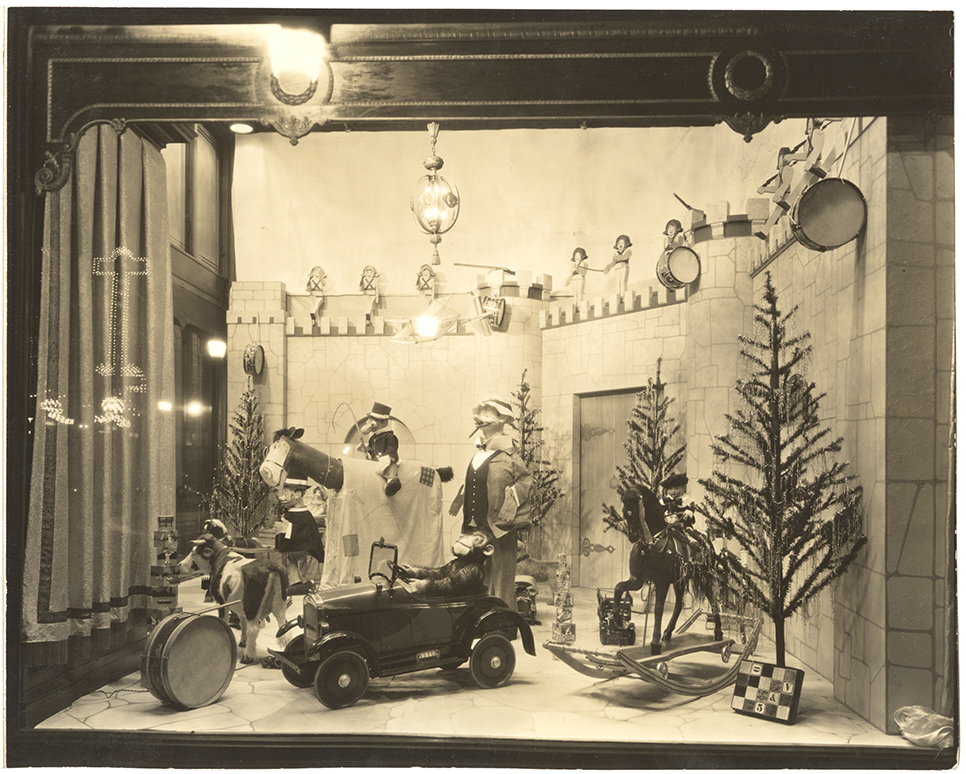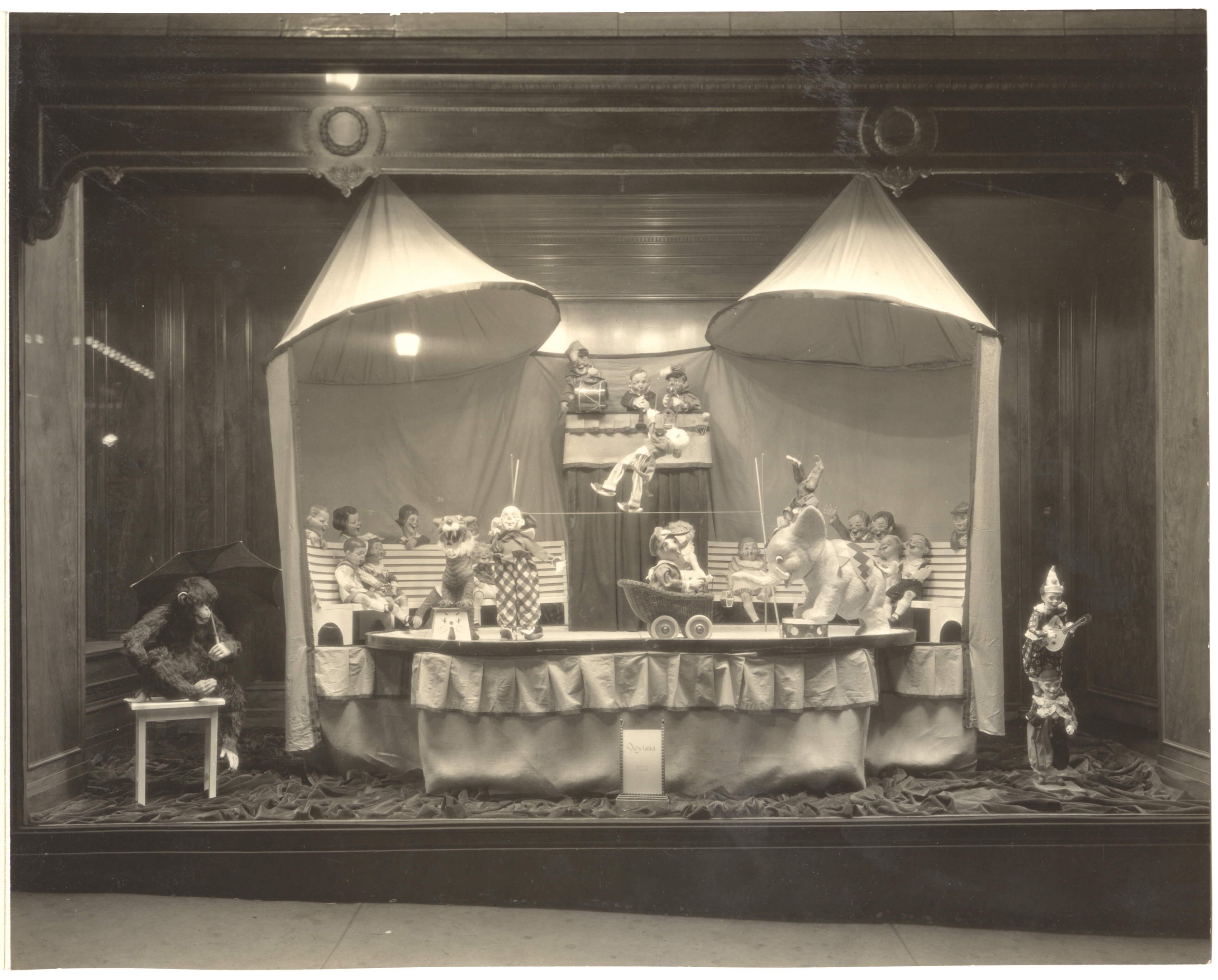Can you remember a Christmas when there wasn’t a special trip to town to see Kaufmann’s windows? It’s as much a part of Christmas as the tree!
Advertisement, Pittsburgh Post-Gazette
Dec. 5, 1940
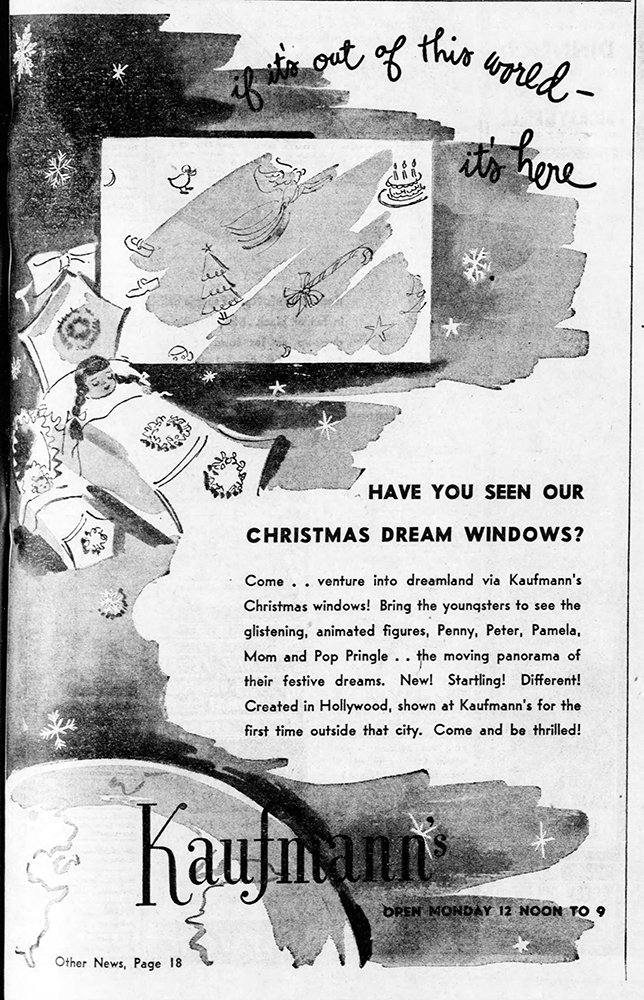
What are your favorite holiday memories? For many Pittsburghers, a visit to the animated windows of the city’s department stores once defined the holiday season. Through the 1980s, Kaufmann’s, Joseph Horne Company, Gimbels, and, until 1958, Boggs & Buhl on the Northside, competed furiously to unveil the “must see” windows of the year. Winning this festive battle carried high stakes. The windows enticed customers to each store’s celebrated “Toyland” and a talk with Santa, generating important holiday sales. For children, the windows became a cherished part of what it meant to be a Pittsburgher at Christmas.
A wonder of technology and motion
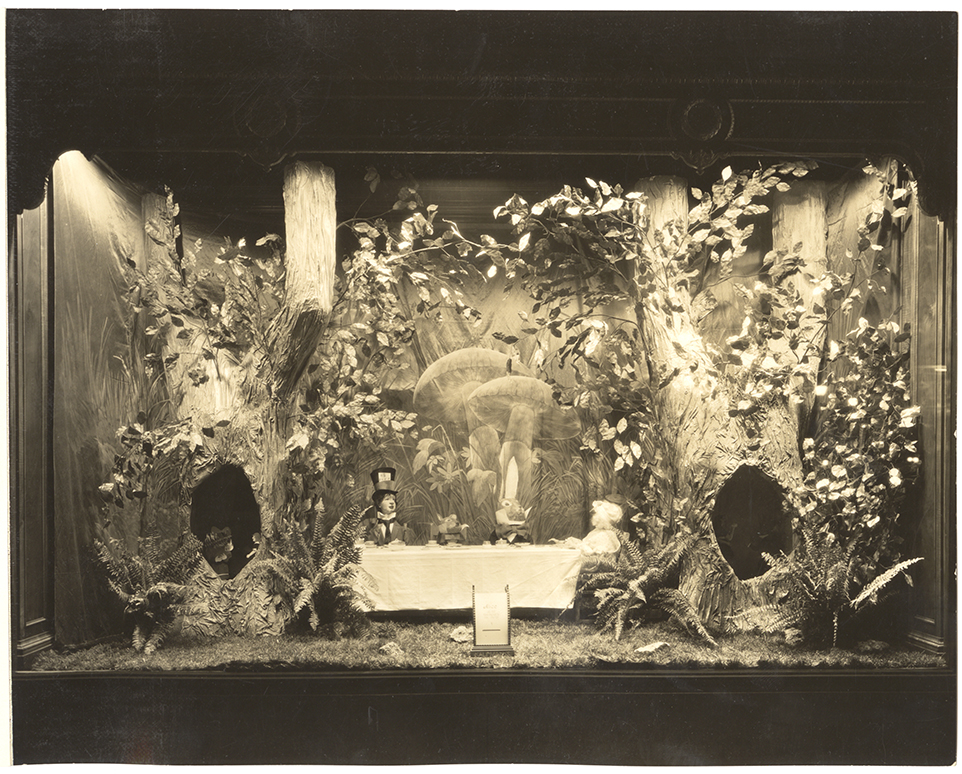
Elaborate Christmas windows emerged in the late 1800s, when the increasing use of electric lights and new ideas about merchandising found a grand canvas in the continuous plate glass windows of the American department store. Soon, voices began calling for those windows to go beyond static displays. One was none other than L. Frank Baum, author of “The Wizard of Oz.” Baum started a trade journal called “The Show Window” in 1897, tapping into his love of theater to urge window dressers to fill displays with fantastic themes and mechanical animation. Window designers needed little urging to follow, and stores such as Kaufmann’s once operated their own window design studios.
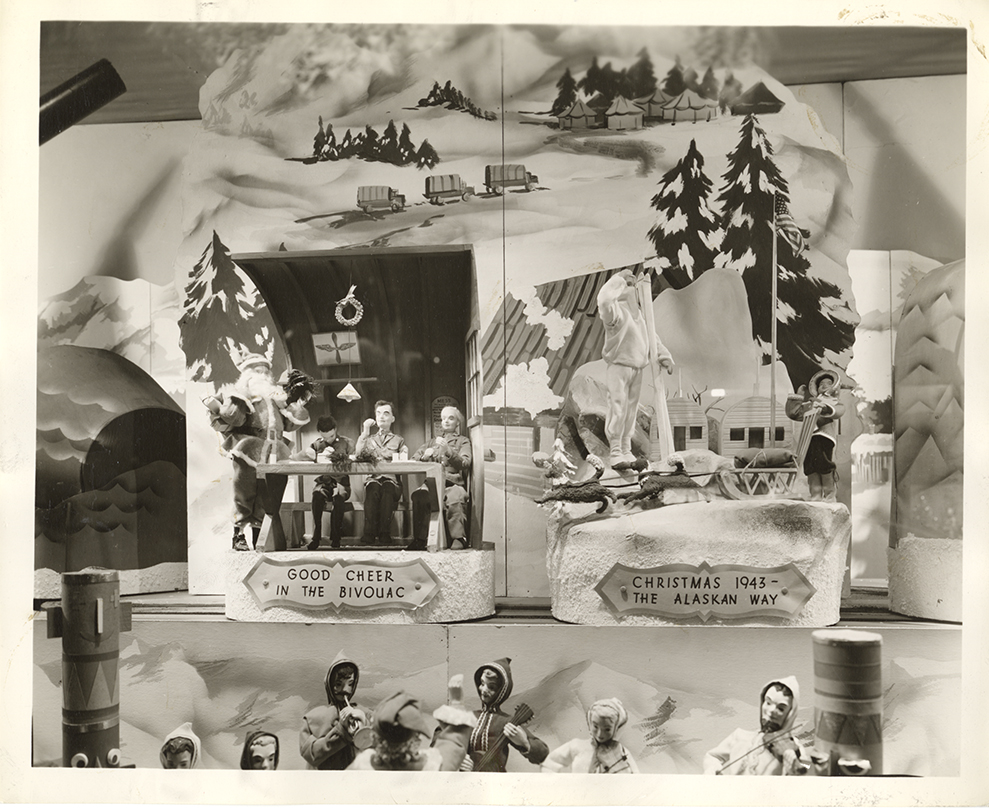
By the 1920s, downtown Christmas windows were an annual part of the American holiday experience. In Pittsburgh, Kaufmann’s featured as many as 26 decorated windows in a Christmas tableau wrapping around the block. Large crowds gathered and stores urged staggered visitation. In 1924, the Joseph Horne Company suggested that parents bring preschool children “in the mornings and early in the week and leave the later afternoons and Saturdays for those who go to school.” Stores balanced visions of Santa with children’s stories and fairy tales such as “Alice in Wonderland,” “Cinderella,” and “Goldilocks and the Three Bears.” Circus themes were also popular. In 1943, during World War II, the windows took on a more patriotic theme, featuring “An American Christmas on Every War Front.”
By the 1960s, downtown department stores faced increasing competition from suburban malls. The 1980s and 1990s ushered in a final round of national closures. Pittsburgh lost Gimbels in 1986 and Horne’s in 1994. By 2010, reports suggested only seven cities nationwide still enjoyed major downtown Christmas window displays. With the closure of Macy’s earlier this year, Pittsburgh joins a common club. While the city’s holiday windows will luckily continue in some fashion, for those who grew up in the glory days of the downtown department stores, a chapter is indelibly closed. The windows along Smithfield Street will never quite be the same.
Have some of your own Christmas window memories to share?
Do you have great family photos of the Christmas windows at Kaufmann’s, Horne’s, Gimbels, Boggs & Buhl, or any of the regional department stores from communities such as Homestead, McKeesport, or Braddock? If so, we would love to see them.
Contact Leslie Przybylek at [email protected] or call 412-454-6427.
For Further Reading
William L. Bird, Jr. “Holidays on Display.” National Museum of American History, Smithsonian Institution, in conjunction with Princeton University Press, 2007.
Hunter Oatman-Stanford, “Losing Ourselves in Holiday Windows,” Collectors Weekly, Dec. 20, 2013. Available online.
Leslie Przybylek is curator of history at the Heinz History Center.

